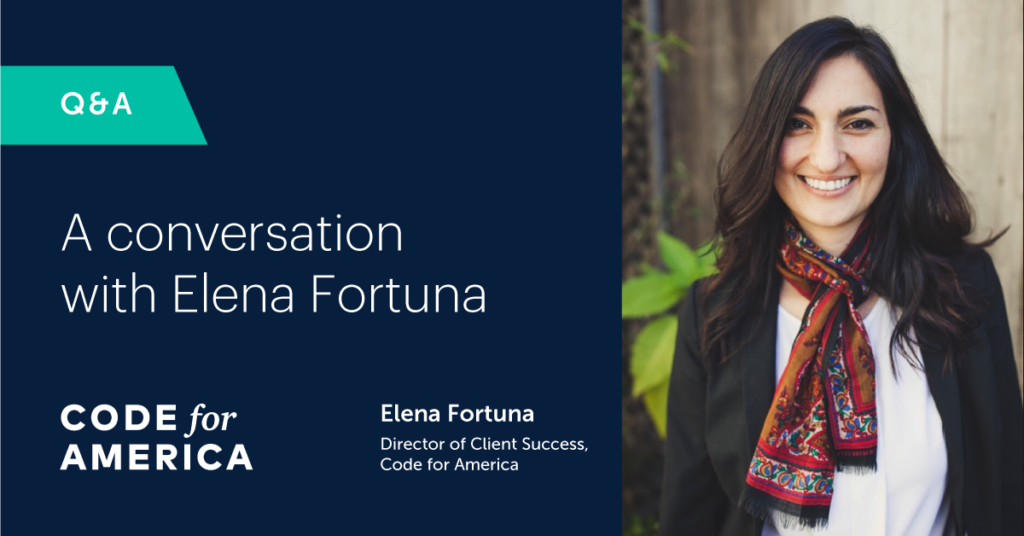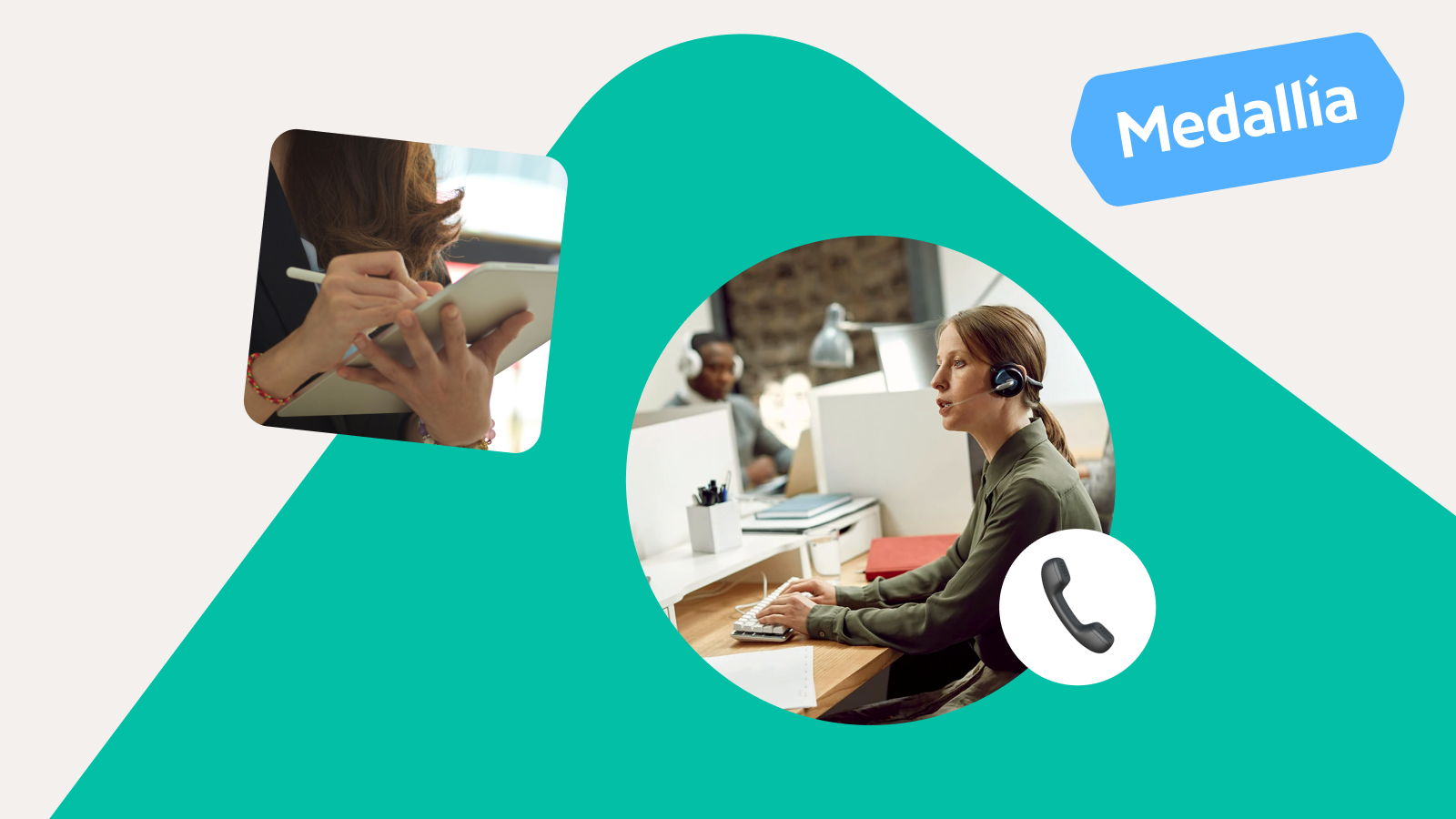How Code for America Built a Client Success Strategy Using Empathy: Q&A with Elena Fortuna
April 1, 2022
Contact Center
In the United States, the digital divide limits the accessibility of life-critical benefits for low-income and underserved communities nationwide. Code for America, a San Francisco-based non-profit, takes on this challenge by breaking barriers and improving access to services such as the Supplemental Nutrition Assistance Program (SNAP), Special Supplemental Nutrition Program for Women, Infants, and Children (WIC), legal record clearance, and free tax filing.
Code for America helped nearly 4 million people in 2021, according to the non-profit’s 2021 Impact Report. It did this during a year of transition for both itself and the entire country. As the pandemic rapidly increased the need for its services, Code for America built out the infrastructure necessary to scale and meet clients’ needs.
Elena Fortuna, Director of Client Success at Code for America, leads the group of agents — known as advocates — tasked with improving access to services, including food stamps and tax refunds. In the span of a single month, the client success team receives tens of thousands of messages and provides customized replies to all of them. Yet, despite the large influx of messages, Elena and her team ensure clients are always treated with empathy.
We recently sat down with Elena to discuss her expertise, how to build and operate a successful client success initiative, and what non-profits and even for-profit businesses can learn from Code for America’s achievements.
Tell us about yourself and what your role at Code for America entails.
Before I joined Code for America, I worked at UC Berkeley doing research, cognitive behavioral therapy, and direct practice for Alameda County and San Francisco County. As a licensed clinical social worker, I’ve done a lot of work around program development with non-profits and governments in their efforts to support communities.
Code for America does this as well. We partner with the IRS to aid clients in receiving the cash they need for financial stability. Another focus for us is GetCalFresh.org, where we partner with the State of California’s Department of Social Services, to drive participation in California’s SNAP program providing food aid to people and families in need.
In my role, I’m leading a team of client success advocates who take on a large volume of messages from clients via live chat, SMS, and email. It’s my job to ensure they’re prepared and supported on the front lines.
How do you view client success at Code for America?
Doing direct practice work with low-income individuals and families as well as people dealing with complex trauma, I saw countless barriers. People struggle to navigate multiple systems, or they don’t have access to any at all. We’re breaking down barriers to provide support and stability in their lives.
Another thing that I noticed was this: team members on the front lines are overlooked. Often they aren’t getting the support they need, and they experience secondary trauma regularly. In addition, we all have our own histories and experiences that impact our ability to always metabolize the secondary trauma and meet the needs of our clients. I don’t know if our society recognizes how hard that is.
What I love about Code for America is the leading path we take to support team members. We do that in so many different ways — mental health days every month and supporting decompression spaces. I recently put all of my team through a training program with the Center for Cognitive Diversity that’s around peer-to-peer support and reflective supervision.
Organizations normally say ‘we love self-care, we recognize trauma’ and all these buzzwords, but hardly anyone practices it. Code for America, though, actually is trying to take action to support its team.
Having the support at an organizational level, I was able to bring on-the-ground, pragmatic experience to Code for America and make a difference for both the team and clients. We still have a long way to go, but are focusing on putting clients and staff first.
Building a service-based team from the ground up, where do you start?
Only two full-time team members were assigned to client success when I arrived at Code for America, and they never had a director leading the charge. Despite the small team, our two founding Client Success Advocates, Atzay Perez Estrada and Andrew Xie, built the grounding principles that continue to guide our work today.
Initially, I did a listening tour to figure out what the needs were in the ecosystem. Just to use GetCalFresh as an example, as my staff work across multiple different program areas. I wanted to know the needs of the clients within the program and build a team empathetic to those needs. Being empathetic is a crucial attribute that we look for when expanding our team in order to best support the clients’ needs.
We use the MOCHA model a lot to determine who’s managing, who’s owning, who’s contributing, and who’s helping. It clears up duties as we operate as a team, and this provides everyone with a sense of both ownership and direction to feel accountable as well as impactful.
In building out the infrastructure, always remain thoughtful about every step. Sometimes it’s best to go slow to get things right.
And, if you have data at your fingertips, use it. We’ve been able to use feedback to understand how clients utilize Code for America’s services. Our engineers then take this information to make immediate changes to our applications and quickly improve the user experience.
What is your main goal for Code for America’s agents as they’re on the front lines?
Code for America focuses on core principles to guide us — build empathy, be personal, always provide next steps and check-in. It pays off to take this approach, and from January through February 2022 our GetCalFresh team earned a 76% CSAT score.
Importantly, this CSAT rating was generated prior to the team using Stella Connect; therefore, we couldn’t provide our clients with the level of nuance needed in post-experience surveys. Now that we are using Stella Connect, we can create custom surveys that allow us to pinpoint any specific places of frustration and better determine if that frustration is with the government benefit system itself or with Code for America’s application.
Is there a mistake that leaders in client success make all too often but can easily avoid?
Leaders need to act on the words they say and take action to support their teams. In other agencies that I worked with, team members were typically left with limited support and lacked the organizational systems to address the secondary trauma they were experiencing.
What customers — or, in our case, clients — say matters. Code for America elevates the client’s voice as much as possible. I think that’s why, as a leader, I want to utilize robust and reliable tools to make our jobs more efficient and also ensure our clients’ needs are being met.
When you realize a gap in a skill set for a team member, what do you do to train and coach?
Early on when I joined Code for America, I realized that our team members have varied backgrounds and different levels of needs. But we also face a high volume of messages, so training and coaching needed to be as efficient as possible and still needs to be efficient today as needs continue to rise.
With that in mind, we’ve crafted surveys to collect feedback from our clients. Now we’re taking the client’s voice and sharing it with team members in 1:1s, and it’s truly amazing to seamlessly capture feedback and share it directly with our team. It draws the connection between what a client experienced and agent performance. We know why a client felt positively or negatively, and we can drill down into that to create better outcomes in the future.
Overall, I want to recognize our team members in training and coaching sessions. Reaffirming their value is important to us, so highlighting their work makes a huge difference in motivating advocates.
What type of impact did the COVID-19 pandemic have on Code for America?
As soon as the pandemic hit, Code for America was flooded with messages and desperately needed the infrastructure to keep up. We didn’t have the infrastructure, and like I said that was a big part of my job as soon as I joined.
With my team, we standardized operations and made the flood of messages much more manageable for us all. Communication between team members is better, and we have the opportunity to learn together through the insights generated by client feedback.
COVID-19 pushed us to scale rapidly. But, with the right technology in place, I think we pulled it together to prepare us as Code for America expands and clients’ needs continue to shift. We have an incredible team that works tirelessly to support clients and improve the services simultaneously.
Given your success as a non-profit, what do you think for-profit businesses could learn from you?
Have the empathy to understand both your employees and your customers. Personalize how you respond to people so that automation doesn’t remove the emotion only a human can provide.
Code for America uses technology to track certain keywords during a live chat with a bot and transfer the client to a real person, and it’s the client success advocate who will offer the best service possible. Advocates can feel what a client is dealing with, so they’ll act with understanding and care.
I also think for-profit organizations would benefit from partnering with more community agencies since they’re on the ground and know what communities face. It is of the utmost importance to make changes based on frontline workers’ experiences and clients’ needs. They have the expertise and knowledge that is needed to provide the best services that are equitable, sustainable, and helpful.
What’s the biggest lesson you’ve learned in your career?
The opportunity for change is right in front of you, and you can’t be discouraged by the barriers or what people say cannot be done.
What we do at Code for America is rewarding because we are able to remove barriers to accessing government services that help communities to thrive. Code for America is the perfect pairing of mission and values with hard work, expertise, and talent. The most rewarding aspects of this work are seeing the direct impacts on communities, collaborating across disciplines and industries, and seeing the potential for what digital government service delivery can look like.
Code for America helps families and individuals who have been marginalized or excluded by government services. Interested in helping the cause? Go here to donate











